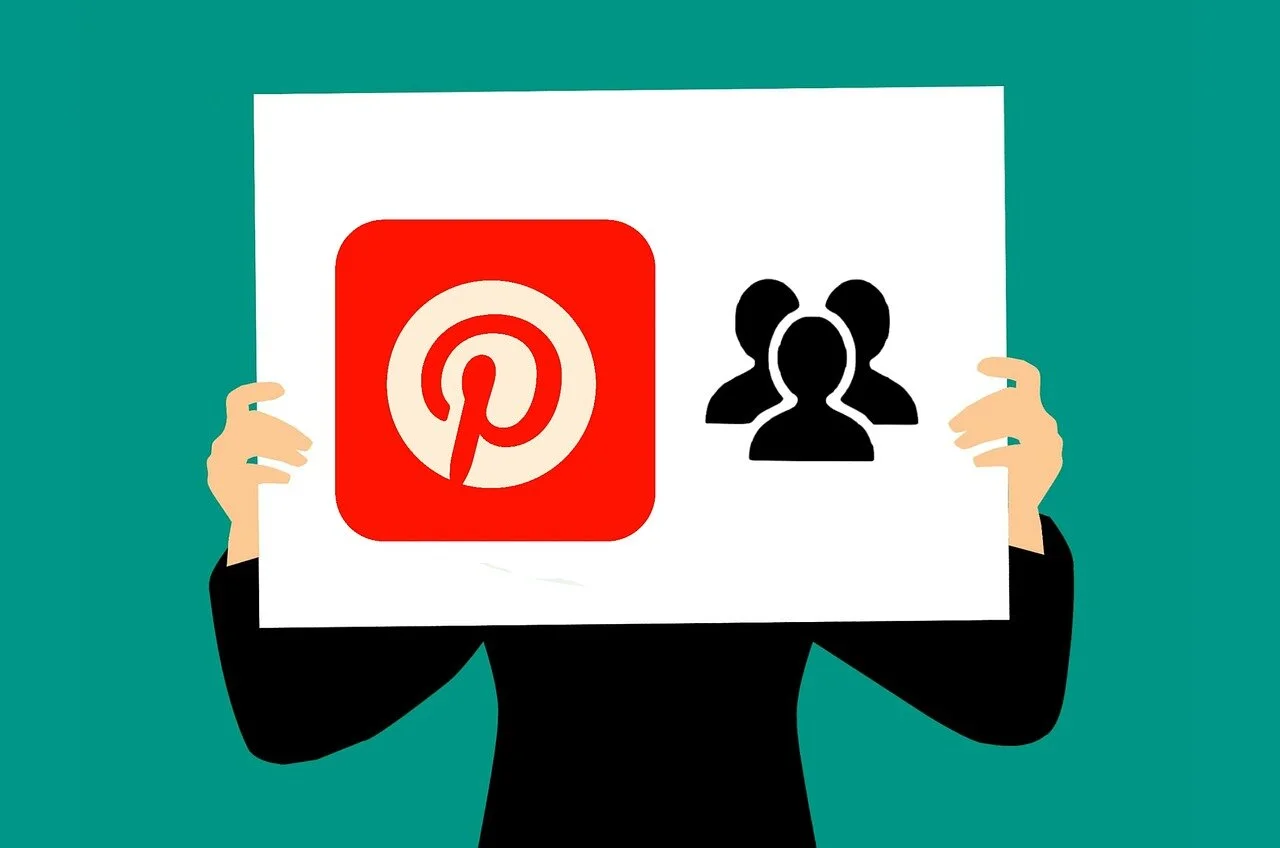The social media platform Pinterest has only been around for a decade, but it is already the third-largest social network in the U.S. This is not surprising considering the vast amount of resources and stunning visuals that cover DIY home makeovers, resources for educators, fitness tutorials, and product reviews. According to Artrepreneur, “Pinterest is a tool used by many different types of people – not just artists or creatives – to search for, find, and share visual references from the web.” The company considers itself “the visual discovery engine.” Pinterest has over 320 million monthly users to date.
Image 1: The potential marketing reach via advertisement on Pinterest. Source: Hootsuite.
Even though Pinterest is such a popular sharing platform, major art organizations do not appear to be using it to its full potential. Many leading institutions do not even have a public profile, meaning they are missing out on important digital engagement opportunities. According to the article Pinterest for Nonprofits, the arts should be using this space to connect with potential audiences: “Museums, orchestras, theater companies, public parks, national landmarks — the arts are not only a popular industry in the nonprofit sector, they’re also the most popular interest category for Pinterest users.”
According to the article Pinterest for Nonprofits: Why it Works and How to Make it Work for You, there are seven main reasons nonprofits might want to use the platform. An institution should consider using Pinterest if they have:
Strong visual content
Cause-relevant data that can easily be visualized
Merchandise to sell or a need for donations
Archives
Resources to share
A desire to share others’ resources with their own supporters
A connection to a visual industry
When setting up a Pinterest account and planning a social marketing strategy, there are a number of considerations to plan for beforehand to optimize digital audience engagement.
Considerations
Set up Pinterest for Business and track analytics.
Open up a free Pinterest for Business account to gain access to analytics and learn how visitors are interacting with content. Pinterest provides resources on how to use its analytics features, including key insights and suggested actions.
Keep in mind that it is a visual platform.
Pinterest is primarily a visual platform, though the image or infographic often is linked to an organization’s home site. An account will draw the most traffic back to its website by creating its own unique pins that link to its site. These pins can be photos, infographics, or videos. When creating a pin, use a 2:3 ratio that is vertical for the best image quality. Resources like Canva are useful for creating unique content that is appropriately sized for the platform without requiring expertise in design.
Pin consistently.
In general, it is better to be consistent with your pinning habits than to pin sporadically or only once per week. Maintaining engagement on Pinterest can be quite easy if you are pinning other accounts’ content. There are many different recommendations for Pinterest goals, ranging from 3 to 30 pins per day. Tools like Tailwind can be used to help with scheduling and consistency.
Examples in the Arts
Below are just a few examples of how arts institutions can use Pinterest to support their mission, grow their following, and increase engagement.
To support a gift shop:
The MOMA Design Store is an example of how a cultural institution can use Pinterest to leverage gift shop sales. With creative board names like “Not-So-Mellow Yellow,” “Go Green,” and “Out in the Orange,” (each featuring items of specific colors) their content is fun and visually dynamic. Their account proves to be successful with over 66,000 monthly viewers and over 40,000 followers.
To highlight a collection or program:
Museums like the J. Paul Getty Museum and the Metropolitan Museum of Art use Pinterest to showcase their collection, categorizing their collections in fun and creative ways. Some of their boards include “Art at Rest,’” “Mustached Men,” and “Museum Selfies,” which highlights self-portraits or photographs of artists. Both of these accounts receive over 1 million monthly viewers.
Performing arts organizations can use Pinterest in the same way to organize and share content about upcoming shows. The Minnesota Opera created boards to accompany some of their shows in which they provide historical context to support the opera, including costumes and props from the time period.
Image 2: The Metropolitan Museums of Art’s Pinterest boards. Source: Screenshot from the Metropolitan Museum of Art’s Pinterest page by author.
To share educational resources:
Pinterest is an ideal platform for educational departments to share materials and resources. The Children’s Museum of Indianapolis uses the platform to share resources on field trips, local children’s programs, educational tips, and at-home activity ideas. Some of the boards support the museum’s exhibits, while others are simply there to serve constituents and connect them with helpful information. Out of mothers who use the internet, 80% use Pinterest, and 40% of dads in the U.S. use it; the platform is ideal for connecting with parents.
Conclusion
Very few arts institutions are using Pinterest as a serious digital engagement tool. Yet, as the third largest social network with a strong visual component, it should be strongly considered in any marketing effort. It can be used in many ways, such as promoting an entire institution, a single program, or a department, like education or sales. Pinterest is also an ideal platform to foster community and digital engagement since others can share and pin posts.
Resources
Corrado, Taylor. “10 Nonprofits That Are Totally Nailing Pinterest Marketing.” HubSpot. Accessed September 15, 2020. https://blog.hubspot.com/marketing/10-nonprofits-nailing-pinterest-marketing-list.
Ostroff, Hannah. “How to Use Pinterest for Nonprofits.” Capterra, May 8, 2015. https://blog.capterra.com/how-to-use-pinterest-for-nonprofits/.
“Pinterest for Nonprofits.” CauseVox. Accessed September 15, 2020. https://www.causevox.com/blog/pinterest-for-nonprofits/.



